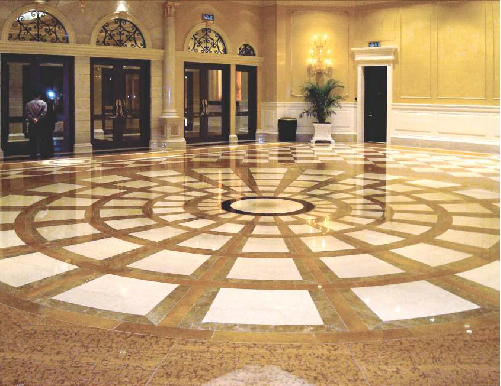ORNAMENTAL STONE
 Author: STC
Author: STC
Article Date: 01.07.2015
Marble, granite, travertine are generally grouped together in the category of natural stones, and are also Known as ornamental stones. In some way they are quite a contrast to stone-derived materials, such as rubble or crushed stone used for building roads, aggregates used to mix mortars and concrete, or marble dust, which are usually used as “load-bearing” materials. For a long time ornamental stones have been considered mainly for their commercial value and rarely have physical and mechanical characteristics have been taken into consideration. These characteristics, however, are actually very important when you have to choose the most suitable material for a specific use. For example, when used for flooring, it is recommended to choose a mechanically strong material with high resistance to wear.
Also, it is good practice to consider the possibility of the material being damaged by atmospheric pollutants or agents, and assess the surrounding conditions such as humidity and its exposure to sunlight and sources of heat. Stone with a lot of veins or breccias, on the other hand, may be fragile, coloured marbles may lose their shine and brightness if used outdoor, and so on. Knowing the physical and mechanical characteristics of the various materials allows to avoid a series of unpleasant consequences and produce works which will remain durable over the years.
From a commercial point of view, natural stone is usually classified as marble, travertine, granite or stone. Apart from the fact that this does not coincide with the scientific classification for stone, each single category also contains materials which are aesthetically very different to each other and which also have different physical and mechanical properties.
Knowing which type of material its commercial name refers to is very important, because physical and mechanical characteristics vary according to the type of the rock. We may say that, in general, granite and stone are more resistant to abrasion and chemicals than marble, but there are numerous characteristics to take into consideration, depending on the correct area of use of the stone chosen.
Each material must be chosen according to its area of use. Generally speaking, and often thanks to one’s experience and common sense, it is recommended to carry out a more thorough analysis of the characteristics of each single material because, being natural materials, they are also characterised by a certain degree of variability in their composition, structure and homogeneity.
By adopting precise analytical techniques, it is possible to minimize the degree of variability in the characteristics of the chosen material and limit aesthetic and performance problems. The importance of how to install these materials needs to be discussed separately.